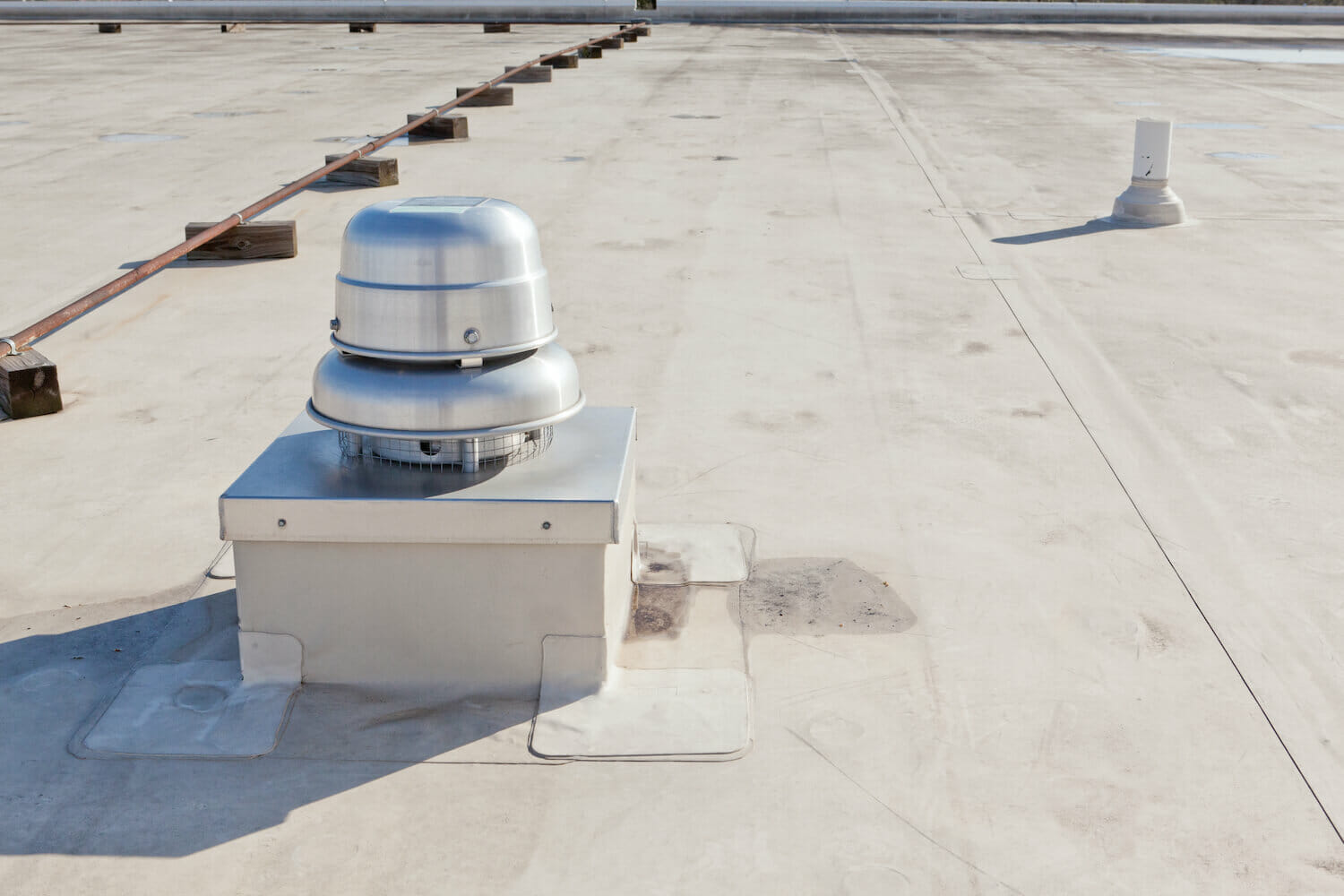Anyone who works at a restaurant or food processing plant knows that grease can damage the building’s interior and is best addressed by blowing it out of the exhaust fan. However, once that grease leaves the building, it can wreak havoc on the roof outside if not properly handled.
More than 80 percent of food industry buildings are damaged when grease is released from the building without a properly installed rooftop grease containment system.
Types of Grease Damage
Without a rooftop grease trap bucket, grease can contaminate or destroy a commercial roof. Here are just a few of the ways grease can harm a commercial roof:
- Breakdown of tar or gravel roofs—Grease exposure can turn tar and gravel roofs soft. Over time, the roof will start to break down and take on a sponge-like texture, weakening the roof’s structural integrity.
- Membrane blistering—Roof membranes help keep buildings waterproofed. When grease gets into a membrane, it can cause the roof to blister and crack.
- Contamination—Over time, grease can seep into a roof so severely that it becomes contaminated and needs to be replaced. Even roofs with a grease bucket are vulnerable to this when not properly maintained. It’s critical to regularly bring in a professional roofer who knows how to clean a commercial grease trap on the rooftop hood.
- Ruptured seams—A roof’s seams, or any other part that involves an adhesive, will deteriorate if grease gets on them. Over time, this could lead to a rupture in the seam and cause a collapsed roof.
- Fire damage—When grease is allowed to build up on a commercial roof, it can become a fire hazard. Grease is extremely flammable, and allowing it to build up isn’t just a risk for a roof but for the entire building and anyone who uses it.
Why Commercial Grease Traps?
Because the potential for damage is so high, grease traps are a fairly common and inexpensive addition to a commercial roof. A rooftop grease trap is installed near the exhaust fan and captures any grease and other harmful particulates before it can fall onto the roof or be released into the environment.
Restaurant rooftop grease traps are often required by law, and other types of buildings may need them to be in compliance with EPA regulations in certain states.
Why You Should Work with a Professional Roofer
Only a professional roofer has the technical skills to properly install grease traps or a rooftop grease trap bucket. Once installed, your roofer should also be able to perform regular maintenance on the trap to ensure that it functions properly.
Maxwell Roofing & Sheet Metal, Inc. has nearly 70 years of experience working with commercial kitchens. To learn more about how a rooftop grease trap installation can help protect your building, contact us today.

